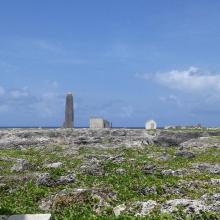

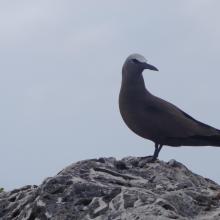
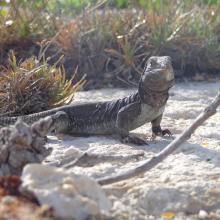

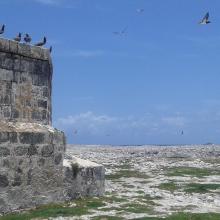
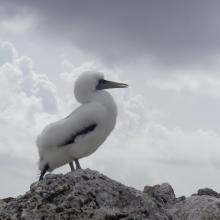
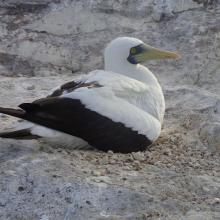
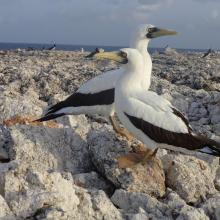
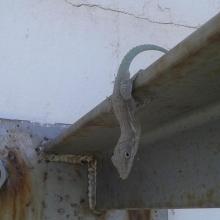

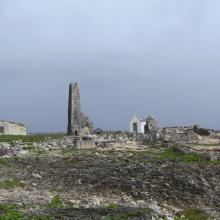


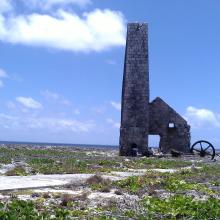

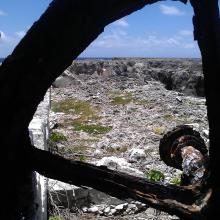
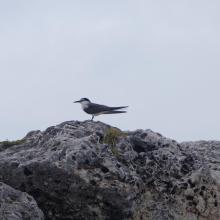
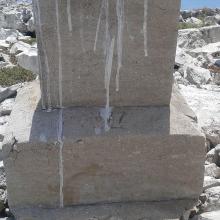

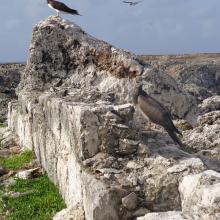


Sombrero Island Nature Reserve Marine Park
- País:Reino Unido de Gran Bretaña e Irlanda del Norte (Overseas territories)
- Número del sitio:2354
- Superficie:1,050.7 ha
- Fecha de designación:22-05-2018
- Coordenadas:18°35'N 63°25'W
Los materiales presentados en este sitio web, particularmente los mapas y la información territorial, se proporcionan tal cual y según están disponibles a partir de los datos de los que se dispone y no implican la expresión de opinión alguna por parte de la Secretaría de la Convención de Ramsar respecto de la condición jurídica de ningún país, territorio, ciudad o zona, ni de sus autoridades, ni respecto de la delimitación de sus límites o fronteras.
Resumen
El sitio es una pequeña isla oceánica rocosa deshabitada y su cima es plana. Se caracteriza por su topografía kárstica, sus acantilados marinos de piedra caliza y su escasez de vegetación. La extracción de fosfatos que se ha practicado en el sitio ha creado una serie de cráteres y escombros que se distribuyen a través de la isla. Se trata de una isla rica en biodiversidad: en ella habitan el lagarto de tierra Pholidoscelis corvinus y el geco Sphaerodactylus sp., endémicos y en peligro crítico, y se ha registrado la presencia de más de 40 especies endémicas de insectos. Además, es un importante lugar de reproducción de diversas especies de aves marinas, entre ellas, poblaciones de importancia internacional o regional de charrán embridado (Onychoprion anaethetus), piquero pardo, alcatraz pardo o boba marrón (Sula leucogaster), tiñosa común, charrán pardo o gaviotín de San Félix (Anous stolidlus) y piquero enmascarado, también conocido como piquero blanco o alcatraz enmascarado (Sula dactylatra). Entre otras aves reproductoras están el charrán sombrío, también denominado gaviotín apizarrado, sombrío, oscuro, gaviota monja o gaviota golondrina oscura (Onychoprion fuscatus) y la gaviota reidora americana (Leucophaeus atricilla). La isla sirve de refugio cuando hay huracanes y tormentas, así como para aves migratorias en primavera y otoño. Las aguas circundantes en un radio de 2 000 metros también forman parte del sitio Ramsar. Ellas albergan arrecifes de coral, Sargassum sumergido y extensos lechos de algas, así como aguas marinas más profundas en donde se alimenta la tortuga verde (Chelonia mydas), en peligro de extinción. En la actualidad, la isla Sombrero se utiliza para la investigación científica y el seguimiento de la recuperación de la fauna y la flora y las repercusiones del cambio climático, sobre todo tras la erradicación del ratón doméstico (Mus musculus) en 2021. Asimismo, se está restaurando la vegetación y se ha elaborado un plan de manejo para el sitio Ramsar y para el Sombrero Island Nature Reserve Marine Park que lo rodea. El Anguilla National Trust ha iniciado una campaña de concienciación pública para poner de relieve la biodiversidad excepcional de la isla y sus conexiones culturales.
Región administrativa:
Anguilla
- Designación jurídica nacional:
- Nature Reserve Marine Park - Sombrero Island Nature Reserve Marine Park
- Fecha de última publicación:22-12-2023
Descargas
Ficha Informativa de los Humedales de Ramsar (FIR)
FIR archivada
Mapa del sitio
Informes y documentos adicionales
- Una descripción del sitio en un inventario nacional o regional de los humedales
- Otras referencias publicadas
